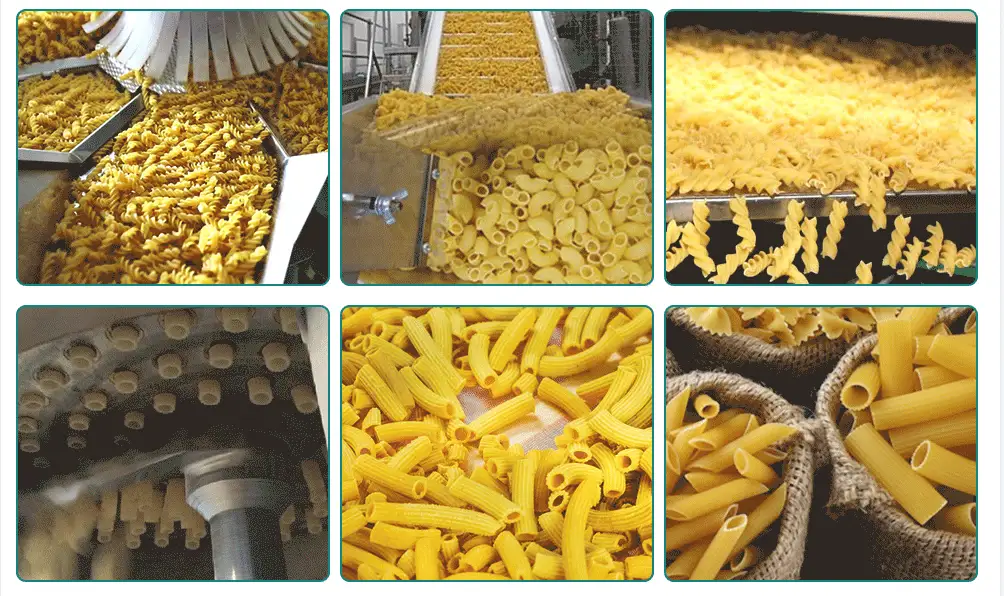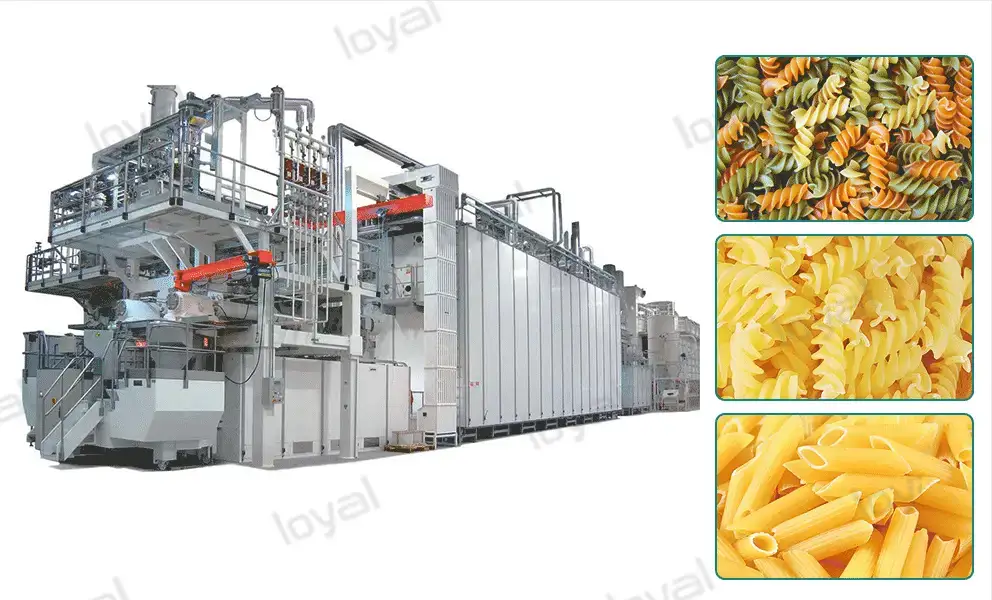Did Thomas Jefferson Introduce Pasta to America?
Thomas Jefferson, the third President of the United States, is celebrated for his profound influence on the nation's early development, democratic ideals, and cultural practices. However, his impact extends beyond the realm of politics into the culinary traditions of America. This article explores the intriguing question: Did Thomas Jefferson introduce pasta to America?
Jefferson's wide-ranging interests included a passion for food and culinary exploration, particularly his fascination with European cuisine. Among the many delicacies he encountered during his time in Europe was pasta, a staple of Italian cuisine that was relatively unknown in the United States at the time. The legend of Jefferson's introduction of pasta to America centers around his return from France in the late 18th century, armed with recipes, a macaroni pasta making machine, and a vision of integrating this novel food into the American diet.
This narrative not only highlights Jefferson's culinary curiosity but also his role as a pioneer in bringing European tastes and technologies to the New World. By examining historical records, Jefferson's personal correspondences, and the implications of his introduction of the macaroni production line, we aim to shed light on how this founding father may have influenced America's culinary landscape.

Thomas Jefferson: The Culinary Innovator
Thomas Jefferson's affinity for fine food and his culinary ventures are an integral part of his legacy. His years spent in France as the U.S. Minister to France exposed him to a wealth of European cuisines, igniting a passion for dishes and ingredients unknown in America at the time. Among these, pasta stood out as a novelty that Jefferson was particularly keen to introduce to his homeland.
Jefferson's European Travels and Culinary Experiences
Jefferson's sojourn in Europe was more than a diplomatic mission; it was a journey of culinary discovery. He frequented Parisian cafes and Italian restaurants, sampling and documenting a variety of dishes. It's during this period that Jefferson's interest in pasta, particularly macaroni, began to flourish. His detailed notes and letters from this time reflect a desire to bring back not just recipes but also the very means of pasta production to America.
Bringing European Cuisine to America
Upon his return to America, Jefferson was not content to let his culinary discoveries remain personal novelties. He had a broader vision of enriching the American diet by integrating European dishes, techniques, and ingredients. Jefferson's efforts to replicate European cuisine at his Monticello estate included the ambitious undertaking of planting vineyards for wine, importing olive trees, and, most notably, incorporating pasta into the menu.
Jefferson's Desire to Replicate European Dishes
Jefferson’s aspirations went beyond mere enjoyment of pasta; he sought to replicate the dish with authenticity. This endeavor led him to acquire a macaroni pasta making machine during his time in France, a significant move that demonstrated his commitment to introducing pasta to America. The machine, which was a novelty in itself, symbolized Jefferson's foresight and willingness to embrace and promote culinary innovation.
Historians and culinary experts alike have pointed to Jefferson’s gastronomic enthusiasm as a reflection of his inventive spirit. Dr. Maria Franklin, a historian specializing in early American cuisine, notes, "Thomas Jefferson’s culinary experiments were an extension of his innovative approach to life. His attempt to introduce macaroni pasta and other European foods to America was part of a larger endeavor to enrich American culture and lifestyle."
Jefferson’s return from Europe marked the beginning of a new chapter in American culinary history, with pasta at the forefront of this transformation. His endeavors laid the groundwork for the diversification of the American palate, showcasing his role not just as a political visionary but as a culinary innovator as well.
The Arrival of Pasta in America
The story of pasta's introduction to the American table is intertwined with broader narratives of cultural exchange and culinary evolution. While pasta had been known in Europe for centuries, its arrival in America marked a significant expansion of the nation's culinary repertoire. Thomas Jefferson's role in this culinary milestone highlights his influence beyond the political and into the gastronomic landscape of early America.
Historical Context of Pasta in Europe
Before delving into pasta's journey to America, it's essential to understand its roots. Pasta, particularly in its dried form, has a rich history in Italy and other parts of Europe, where it was prized for its versatility, long shelf life, and nutritional value. By the time Jefferson encountered pasta in France and Italy, it was already a staple food, enjoyed in various forms across the continent.
Jefferson's Culinary Ventures and the Introduction of Pasta
Jefferson's fascination with pasta during his European travels led him to envision it as a novel addition to American dining. Historical records indicate that upon his return, Jefferson sought to replicate the pasta dishes he had enjoyed abroad. His efforts were not limited to personal consumption; Jefferson served macaroni dishes at state dinners, thereby introducing this European delicacy to America's political and social elite.
Evidence of Pasta Consumption in Early America
The most direct evidence of Jefferson's influence on pasta's introduction to America comes from his own records and correspondences. Jefferson meticulously documented his culinary experiments, including detailed descriptions of a macaroni pasta making machine he had acquired in Europe. Additionally, inventory lists from Monticello, Jefferson's estate, include references to "macaroni," indicating the purchase of pasta or ingredients for its production.
Moreover, Jefferson's efforts to serve pasta at official dinners and his instructions to his chef at Monticello to prepare macaroni dishes further underscore his role in popularizing pasta in America. These acts were among the earliest known instances of pasta being consumed in the United States, marking the beginning of its journey into the American culinary tradition.
Dr. Luca Peliti, an expert in food history, comments on Jefferson's impact: "Thomas Jefferson's introduction of pasta to America is a testament to his visionary approach not just in governance but in cultural and culinary matters. He recognized the potential of pasta to enrich the American diet and actively worked to integrate it into the nation's culinary scene."
Jefferson's endeavors in bringing pasta to America were not merely an act of culinary replication but a gesture towards cultural enrichment and diversification. Through his actions, Jefferson laid the foundation for pasta's enduring presence in American cuisine, a testament to his broad impact on the nation's cultural development.
Jefferson's Macaroni Machine: A Closer Look
Thomas Jefferson's passion for pasta didn't stop at mere appreciation. His interest led him to acquire a macaroni pasta making machine during his stay in France, an act that not only highlighted his culinary curiosity but also his foresight into agricultural and kitchen innovations. This machine, and Jefferson's endeavors surrounding it, represent a significant chapter in the story of pasta in America.
Description of the Macaroni Pasta Making Machine
The macaroni pasta making machine acquired by Jefferson was a novel invention of its time, designed to extrude dough into macaroni shapes. While specific details of the machine’s design are sparse, historical records indicate that Jefferson was intrigued by its mechanism and potential to simplify the pasta-making process. This acquisition wasn't just for personal use; it symbolized his broader intent to introduce pasta production to America.
Jefferson's Notes and Letters
Jefferson’s notes and correspondence provide invaluable insights into his thoughts on pasta and the machine itself. In letters to his friends and family, Jefferson mentioned the pasta making process and his interest in machines that could aid in its production. These documents reveal not only his personal interest in culinary arts but also his vision of integrating European technological advances into American agriculture and cuisine.
Historical documents, including Jefferson’s letters, mention his efforts to have a pasta machine sent to Monticello, his estate in Virginia. This move was part of his larger project to innovate American agriculture and food preparation, integrating European culinary practices into the American lifestyle.
Analysis of Jefferson's Culinary Innovations
Experts in culinary history view Jefferson's import of the macaroni pasta making machine as a significant event in the culinary world. Dr. Fiona Adams, a scholar in American culinary history, remarks, “Jefferson’s introduction of the pasta machine to America was more than a novelty; it was a forward-thinking approach to food preparation that mirrored his innovative spirit in politics and agriculture.”
The machine’s arrival at Monticello can be seen as a physical manifestation of Jefferson’s broader ambitions to revolutionize American cuisine. By integrating this piece of European technology into his culinary practices, Jefferson was not just diversifying the American diet but also demonstrating the potential for technological innovation to enhance domestic life.
The Impact on American Cuisine
Jefferson's macaroni machine, and his broader culinary endeavors, had a lasting impact on American cuisine. By introducing the concept of a macaroni production line and the machinery to support it, Jefferson was ahead of his time, envisioning a future where pasta could be a staple in the American diet, much like it was in Europe.
This episode in Jefferson’s life highlights his multifaceted legacy, showcasing him as a statesman deeply interested in the cultural and technological advancements of his time. The macaroni pasta making machine stands as a testament to Jefferson's ingenuity and his enduring influence on American culinary practices.

The Macaroni Production Line at Monticello
Thomas Jefferson's introduction of a macaroni pasta making machine to Monticello was not merely an act of personal indulgence but a step towards agricultural and culinary innovation. His vision extended beyond the novelty of pasta; Jefferson envisaged a macaroni production line that could cater to a wider audience, showcasing his forward-thinking approach to food production and consumption in early America.
Envisioning a Macaroni Production Line
Jefferson's acquisition of the pasta machine was a move towards self-sufficiency and innovation at Monticello. He imagined a macaroni production line that could produce pasta not just for his household but for a broader market. This vision was in line with his efforts to modernize American agriculture and introduce new crops and technologies.
The Impact of Jefferson's Macaroni Making on American Cuisine
While there is no record of a full-scale macaroni production line being established at Monticello during Jefferson's lifetime, the introduction of the pasta machine and the serving of pasta dishes at his estate had a ripple effect on American cuisine. Jefferson's enthusiasm for pasta contributed to its acceptance and popularity in the United States, marking the beginning of pasta's journey from a foreign novelty to a staple in American households.
Jefferson’s efforts to incorporate pasta into the American diet were indicative of his broader interests in enhancing the culinary landscape of the country. By experimenting with pasta production, Jefferson was ahead of his time, anticipating the future importance of pasta in American cuisine.
Contemporary Reflections on Jefferson's Culinary Innovations
Culinary historians and chefs today recognize Jefferson's role in introducing pasta to America and his innovative approach to food production. Chef Michael Smith, an advocate for traditional American cuisine, notes, "Thomas Jefferson's introduction of a macaroni pasta making machine and his attempts at establishing a macaroni production line reflect his visionary approach to food. It's a testament to his legacy that pasta has become such an integral part of American cuisine."
Jefferson's culinary ventures at Monticello, particularly his exploration of pasta making, were part of his broader efforts to blend innovation with tradition. These endeavors not only enriched the dietary habits of early Americans but also laid the groundwork for future culinary developments.
Thomas Jefferson's foray into pasta making and his vision for a macaroni production line at Monticello are emblematic of his innovative spirit. Though a full-scale production line was never realized in his lifetime, Jefferson's efforts to integrate pasta into American cuisine were undoubtedly successful. His culinary experiments with pasta underscore his role as a pioneering figure in American history, whose influence extended beyond politics and into the very fabric of American culture and cuisine. Jefferson's legacy in the culinary world, much like his political legacy, is marked by a forward-thinking approach and an unwavering commitment to improvement and innovation.
Conclusion
The exploration into whether Thomas Jefferson introduced pasta to America reveals much more than a simple yes or no answer; it uncovers a story of culinary innovation, cultural exchange, and a founding father's vision of a more diverse American cuisine. Jefferson's endeavors, from acquiring a macaroni pasta making machine during his time in France to envisioning a macaroni production line at Monticello, highlight his role as a pioneer in bringing new tastes and technologies to the United States.
Jefferson's efforts to incorporate pasta into the American diet were not an isolated interest but part of a broader ambition to enrich the nation's culinary landscape. Through his actions, Jefferson demonstrated an early understanding of the importance of food in cultural identity and the potential of culinary innovation to improve quality of life. His influence on American cuisine, particularly his introduction of pasta, is a testament to his forward-thinking and experimental nature.
In reflecting on Jefferson's culinary legacy, it becomes evident that his contributions to American cuisine go beyond mere recipes or dining preferences. They reflect a vision of America as a place of cultural richness and innovation. Jefferson's passion for pasta and his attempts to integrate it into American life were early steps towards the diverse and vibrant culinary scene that characterizes the nation today.
In conclusion, while Thomas Jefferson may not have been the sole figure responsible for introducing pasta to America, his efforts significantly contributed to its popularization and the broader trend of embracing and adapting foreign cuisine. His story reminds us that the foundations of American cuisine are built on curiosity, innovation, and an openness to the world's flavors, principles that continue to inspire chefs and food enthusiasts across the nation.












